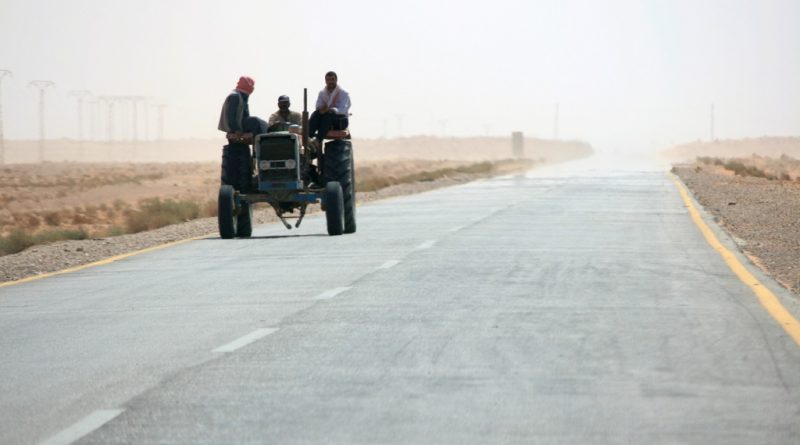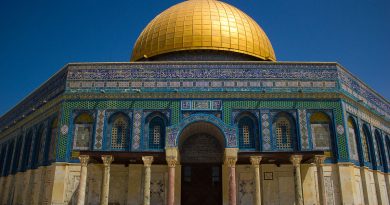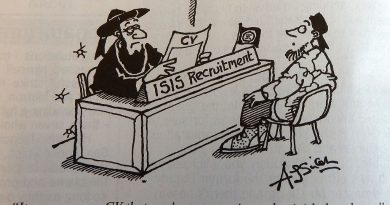The fall of Deir ez-Zor and the collapse of the Caliphate in Syria
On November 3, 2017, the Syrian government forces backed by Russian air forces conquered the city of Deir ez-Zor, the last major city under ISIS control. After the fall of Mosul in Iraq on July 10, fall analysed here at Changing World, and the fall of Raqqa in Syria on October 17, 2017, the auto-proclaimed Caliphate under Abu Bakr al-Baghdadi lost its last stronghold in Syria and the control of an oil-rich region, crucial for the treasury of the Islamic State – and obviously for its military capability.
The Deir ez-Zor campaign: the fall of the city to ISIS forces
The city of Deir ez-Zor was the objective of several clashes between the different political-military groups fighting in the Syrian civil war since the beginning of the military confrontation. It can be said that the city and the region has never been fully conquered by any of those groups: since 2013 until 2014 most of the region and the city were in the hands of the composite Syrian rebel forces, while the Syrian Arab Army (SAA) loyal to President Bashar al-Assad kept holding limited areas of the city and some towns in the region.
Within the anti-Assad faction fighting in Syria emerged since 2014 the ISIS force led by Abu Bakr al-Baghdadi. In April, 2014 these forces staged direct attack in the province of Deir ez-Zor, beginning from the frontier with Iraq and projecting its manoeuvre to the capital of the governorate. It is of interest the fact that the battle fought by the forces of ISIS in that period were mostly against al-Qaeda forces and its sibling al-Nusra Front. Furthermore, as ISIS forces advanced to Deir ez-Zor, contingents of western-backed Syrian insurgents started to defect and join Daesh forces filling their ranks: it is not clear why those insurgents joined in high numbers Daesh forces; possibly it was a matter of opportunism, survival or simply greed or, more possibly, a mixture of all those reasons, plus others like religious reasons.
July 2014 can be considered a turning point in the fight for Deir ez-Zor governorate. After some of the al-Nusra Front forces pledged loyalty to al-Baghdadi, confirming a shift in power from al-Qaeda and al-Nusra to ISIS, Daesh forces approached the city of Deir ez-Zor and occupied the position previously held by the rebel forces. In that period ISIS controlled almost the whole of the Deir ez-Zor province and its capital, with the exception of few small redoubts in the vicinity of the city and its military airport. From this moment, ISIS staged a siege to the pocket of territory under the control of the last Syrian forces loyal to Bashar al-Assad; nonetheless, this siege and the offensive against these pockets of resistance never led to the fall of the military airport and the districts in the hand of the Syrian Arab Army loyal to Damascus.
The Deir ez-Zor campaign: SAA counter-offensive
After a series of military setbacks in 2015, Syrian President Bashar al-Assad asked for a direct intervention of Russia in the civil war. Russian intervention in the conflict can be considered as a turning point in the war: Russian support to al-Assad in terms of airstrikes and logistical support to the SAA permitted to the forces loyal to the Syrian regime to recover from the setbacks and start a slow, but constant progression to regain the lost territory.
In July 2017, while Syrian Democratic Forces north of Euphrates river started an operation to conquer ISIS capital, Raqqa, south of the river SAA forces backed by Russian airstrikes began the operation to reconquer most of eastern Syria region, starting from the territories south of Raqqa, converging to the south in the direction of the oilfields in the city of al-Sukhnah, and finally turning again towards the Euphrates in the direction of Deir ez-Zor. This operation reached its first important success when SAA troops mounted an offensive to capture the town of al-Sukhnah, reaching their goal at the beginning of August. After the fall of the oil fields in the Homs governorate, SAA forces could prepare the final offensive to Deir ez-Zor following the highway from al-Sukhnah and the Euphrates further north.
At the end of August SAA forces started an offensive to break the siege of the military airport of Deir ez-Zor and the military base in which the 137th SAA Brigade was besieged. After few days of combat, SAA forces were able to open a channel with the besieged troops both in the airport pocket and in the military base around Deir ez-Zor.
The Deir ez-Zor campaign: SAA’s siege and conquest of Deir ez-Zor
After having broken ISIS siege to Deir ez-Zor, SAA forces established two new strategical objectives for the campaign: the first was encircling the city of Deir ez-Zor and cutting the access to the city to the Syrian Democratic Forces backed by the US that were staging an offensive to capture the same city from the east bank of the Euphrates; the second and most important objective was the full conquest of the city. It has been asserted that the battle for Deir ez-Zor is just partially a struggle against ISIS insurgents, as since the fall of Mosul and Raqqa, and the clear perspective of the fall of ISIS both in Syria and Iraq, the main political perspective of the military operation on the ground is the definition of political and military boundaries between the two anti-ISIS coalition, the loyalist one backed by the Russians, and the Syrian Democratic Forces backed by the US
The first objective of the campaign was reached through the operation codenamed ‘Assad’s jump’. In September SAA forces crossed with pontoon bridges the Euphrates and occupied the northern outskirts of Deir ez-Zor; in the meanwhile, some SAA detachment were heading west in direction of the town of Maadan in order to close the siege around Deir ez-Zor and liberate the whole western bank of the Euphrates from ISIS presence. After having closed all the accesses to the city, SAA forces started the operation to advance into the city in mid-September. Unlike the battles of Mosul and Raqqa, that lasted months, ISIS resistance in Deir ez-Zor did not last long: by mid-October most of the city was already under SAA control; on 3rd November the Syrian military declared that the city was completely under government forces’ control, while some minor ISIS redoubts were conquered the day after.
Aftermath
The fall of Deir ez-Zor can be considered as the third and last chapter of the collapse of ISIS in Syria and Iraq. After the fall of Mosul on 10th July, 2017, and the fall of Raqqa on 17th October, ISIS forces in Deir ez-Zor did not even offer a resistance against the two coalitions comparable to the ones displayed in Mosul and Raqqa, certifying its precarious conditions regarding its military capabilities. In this moment, ISIS does not hold any major city in the Levant; nonetheless, it controls several oil fields in eastern Syria, from which it can still obtain revenues for financing its activities. At any rate, it is expectable that the two coalitions acting in Syria and the Iraqi military forces will stage operations to regain full control of the last territories held by ISIS.
What is difficult to predict is the evolution of the political context in Syria and Iraq. A posteriori it is quite clear that the main reason of ISIS expansion in Syria and Iraq was the political quasi-anarchy that followed the withdraw of US troops from Iraq in 2013, and the political fragmentation in Syria following the Arab Spring and the revolt against Bashar al-Assad regime; in this political context, the contraposition between Shia and Sunni Muslims in these two countries contributed to the rise of the black flags of Daesh. As soon as the political fragmentation was simplified through the formation of two coalitions in Syria mainly patronised by US and Russia, and the American intervention in support Iraqi central government, military operations were staged to slowly regain territory from ISIS, until the conquest in the last months of Mosul, Raqqa and Deir ez-Zor. If ISIS will fall within few months or more, it is still impossible to say. Nonetheless, some of the next challenges that will define the political situation in Syria and Iraq are already clear: the future of Bashar al-Assad, the contraposition between the Russian-backed block and the American-backed coalition, and the role of the Kurds in the peace process that will follow the end of the military operations in the Levant.
The road from Ar-Raqqa to Palmyra, over Deir ez Zor, back in 2008. Photo by Cristian Iohan Ştefănescu / CC BY 2.0
![]() This work is licensed under a Creative Commons Attribution-NonCommercial-ShareAlike 4.0 International License.
This work is licensed under a Creative Commons Attribution-NonCommercial-ShareAlike 4.0 International License.




